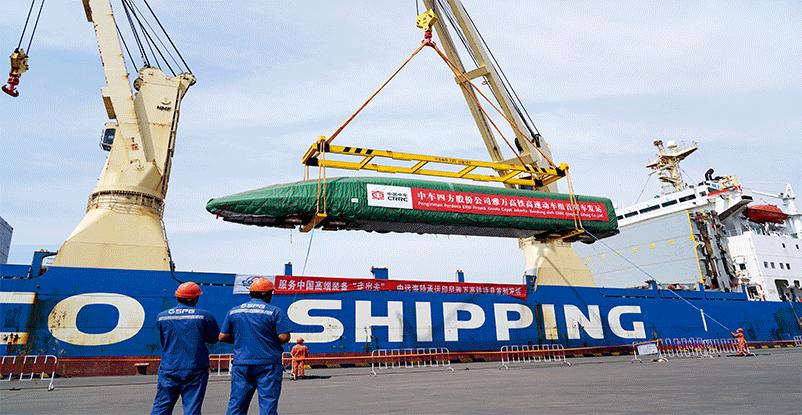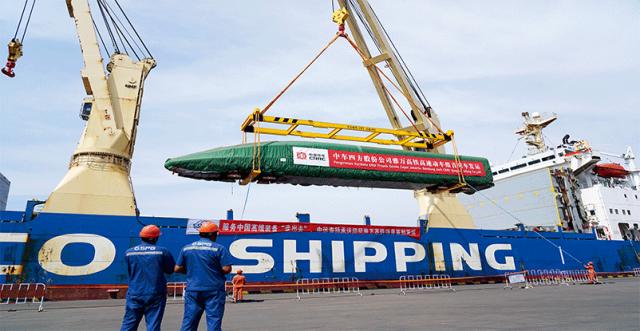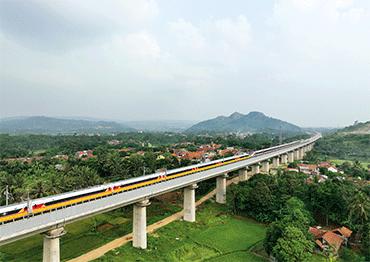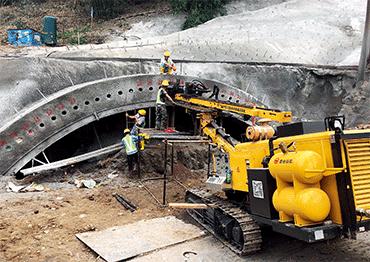“If you ask me whether the highspeed railway can make money next year, the answer is a clear no,” Zhang Chao said.
Total investment for the high-speed railway reached around US$6 billion. Although there were no cost overruns, Zhang said that land acquisition, Covid-induced delays and inflation that caused rising raw material prices had increased the overall cost. He said the 142-kilometer railway is not “cheap” compared to similar lines in China that cost 100-125 million yuan (US$13.7-17.1m) per kilometer.
Zhang observed that as Indonesia’s largest foreign investment project, the railway will play a significant role in stimulating the railway industrial chain and other associated industries. “Convenient transportation will contribute to regional economic prosperity, and the resulting economic development will help increase passenger flow,” Zhang said, adding that some tend to focus solely on the project’s cost without considering its contributions to Indonesian society.
Experts anticipate the project will have a positive impact on industries, including the manufacturing of highspeed trains, operation services and infrastructure construction in cities along the line, which will create jobs and attract investment to the region and country as a whole.
“The railway will not only promote advances in electrified rail technology in the country, but also improve employment and drive manufacturing and infrastructure development in affected areas,” Indonesian Ambassador to China Djauhari Oratmangun said during an open house event held online by CREC in January 2021.
According to CREC, the building and operation of the railway have created 51,000 jobs, and 45,000 Indonesians have received technical training in skills such as welding, electrics and machinery.
Lu Kang, Chinese ambassador to Indonesia, told NewsChina that the rail line will generate 30,000 jobs. “More importantly, after the line is put into use, more economic growth points will emerge, resulting in a significant economic scale effect,” Lu said.
The project is attracting more investment from Chinese companies, which is contributing to local employment and consumption.
In 2022, trade volume between China and Indonesia reached US$149.4 billion, a 20.16 percent increase from the previous year, making China the country’s biggest trade partner for the 10th consecutive year. Chinese investment in Indonesia spans sectors including power generation, mining, automotive, internet and finance.
An article published by The Diplomat in June argues that public works projects do not necessarily need to turn a profit to be considered successful, and public transit systems usually run at a loss. The article emphasizes that benefits like Indonesia’s ability to absorb the utilized technology and skills for its own infrastructure will determine the project’s worth.
Analysts note that Indonesia’s economic growth rate, which has remained around 5 percent, is similar to the economic development cycle China experienced 20 years ago, characterized by a boom in infrastructure construction that significantly boosted economic growth.
According to Lu Kang, many Indonesians recognize China’s transformation from a developing nation to a major economy through its own path of modernization, and that China is willing to share its experiences with other developing countries through cooperation, including initiatives such as the Belt and Road Initiative (BRI). This cooperation enhances ordinary Indonesians’ understanding of China, Lu said.
The Jakarta-Bandung high-speed rail line follows the completion of a semi-high-speed railway in Laos, which connects capital Vientiane and Kunming, capital of Southwest China’s Yunnan Province, running at speeds of up to 160 kilometers per hour. Over the past decade, CREC has built several rail lines in BRI countries, including the Mombasa-Nairobi Railway in Kenya.
Following the completion of the Jakarta-Bandung high-speed rail, Malaysia announced in July that it is considering proposals from companies to revive the high-speed railway plan connecting Kuala Lumpur and Singapore, which was canceled more than two years ago.
Indonesia has expressed intention to extend the high-speed line to Surabaya in eastern Java, the country’s second-largest city.
Lu Kang told NewsChina that Indonesia’s size and economic influence among ASEAN members make it an important player. “The achievements in cooperation between China and Indonesia will provide some experience for other countries,” Lu said.
Lu said he witnessed the determination and confidence of both governments and the consistent collaboration between the construction teams from China and Indonesia to overcome many challenges to push the rail project forward.
“If there’s experience to be drawn for cooperation between China and Indonesia, China and ASEAN members or from a broader scope, it is adhering to the basic principles of the BRI – extensive consultation, joint contribution and shared benefits,” Lu said.
“As clarified from the start, the goal of the BRI is to complement the development strategies of the countries involved, rather than reinvent the wheel. Because of this, China’s cooperation with other countries is based on their specific needs and local conditions,” Lu said. “In this sense, the Jakarta-Bandung high-speed rail line exemplifies cooperation under the BRI framework.”

 Old Version
Old Version




